“The way we organize the arts in the West needs to be rebuilt from the ground up”
Hassan Mahamdallie in conversation with Anita Moser and Ielizaveta Oliinyk
Hassan Mahamdallie is a playwright, stage director, writer, activist and expert in diversity and the arts. For Arts Council England, he developed the Creative Case for Diversity, a unique approach to diversity, equality and the arts. In this interview, he gives an insight into his understanding of diversity and the central arguments, successes and challenges of the Creative Case. He argues for the democratization and decentralization of the arts, which has to go hand in hand with a redistribution of resources and power in favour of marginalized artists.
What is your understanding of diversity? Which concepts and theoretical references do you draw on?
My concept of diversity is framed wide and deep, as I think it should be. In theoretical terms, you might call it intersectional: it covers a lot of different aspects of human life and the connections between them. Diversity is also a concept which goes across different streams of thoughts.
As I have always said, we don’t have to invent diversity because diversity just is. Blocking out diversity, confining diversity or trying to limit diversity is a human thing that we’ve done. Therefore, it’s not so much about creating diversity as it is about dismantling barriers and fighting inequalities which are structural and man-made and therefore can be altered. The big question is how we change those structures to make them more equal. If we can liberate diversity from man-made confinement then diversity in all its different facets will become part of everyday life, rather than something which is shut out.
What does this mean with regard to the arts?
I think that it is the same for the arts: Who we give our arts funding to, how we programme or curate, who we encourage or elevate or give value to – or, in reverse, do not give value to – these are all things which we have done to limit diversity in the artistic world. As an artist myself, I believe that diversity is one of the central elements in artistic practice and in the creative act itself. Quite often, issues of diversity, equality and all the catchphrases and artificial terms that we use – what they don’t take into account is their relation to arts practice, the creation of art, creativity, human expression and all those aspects. What concerns me most is the way we separate diversity from artistic practice.
“The main problem is the structural issues, because within the structures are the concentrations of power and decision making, and democracy is about decision making.”
Which concrete actions are needed to make the cultural sector more equal and more diverse? Which actors are needed and on which levels do we need change?
I don’t believe there’s a technocratic solution to this question of diversity and inequality. I don’t believe that there’s some way in which we can tweak our structures, processes, projects or ways of doing things. Because at the end of the day, it’s about two things and they’re both connected: one is power and the exercise of power, and the second, which is related to it, is a lack of democracy in the arts. I believe that when you start tackling these issues, ways will automatically follow to make things more equal and give more people opportunities.
But of course the problem we have is that power is very attractive. The arts are about as undemocratic an area of human activity as you can possibly find. We artists talk a lot about democracy and equality in the arts. The arts are based on that, historically; I mean, at least there is one strand that is definitely based on that notion of the liberation of the human spirit. But we are also very riddled with power structures and a lack of democracy in the arts. Before we get to what can we do about it, we have to name the beast; we have to recognize what it is that is stopping change.
It seems to me that there was a consensus on the stage at the Belvedere Museum in Vienna, where I did my talk.*1 *(1) We had a whole group of people who span the arts, from activists to leaders of institutions and politicians in charge of policy. They all agreed that something fundamental had to happen; someone was talking about things that they were already doing, and so on. But at the same time, so little has changed. And the more we talk about it, the less change seems to happen. I think the reasons for this are issues of power and democracy in the arts.
The main problem is the structural issues, because within the structures are the concentrations of power and decision making, and democracy is about decision making. The way we organize the arts in the West needs to be completely dismantled and rebuilt from the ground up in ways that are much more participatory, empowering, sharing, equal, egalitarian and democratic, so that power is distributed, not accumulated.
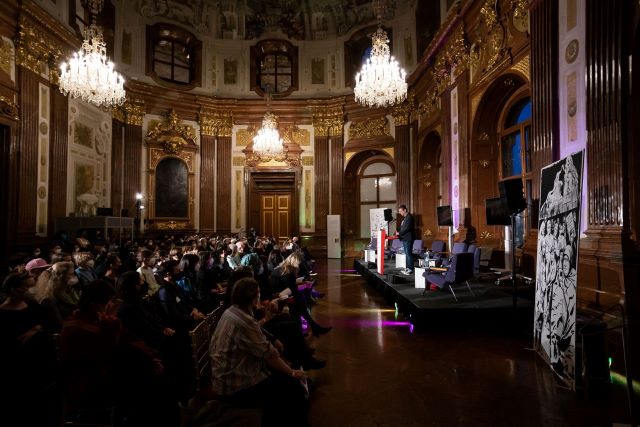
Belvedere © Ouriel Morgensztern
Where do you see the role of society in this?
The most important thing about the arts is its connection to society. There’s no art without an audience. Whether it’s a painting or a concert, a piece of theatre or a piece of digital art, it has no meaning unless it’s received by someone. At the moment, we have particular structures in the arts as we have organised them in the West, probably since World War II with the intervention of the state in funding the arts, which has perhaps surprisingly acted to push the arts away from society.
We could talk about many actions which could make things more equal in the arts, changes in how arts funding is distributed, changes in commissioning, rewriting job descriptions to make sure posts don’t go to the same narrow group of people. We could do all those things and, to be honest, they are quite simple. But it becomes complicated as soon as you present these solutions to the art world. One of the speakers on the session at the Belvedere Museum said, ‘but it’s complicated and there’s not a one-size-fits-all; it depends on the organization and its history.’ We could say, ‘yes, that’s probably true,’ right? But what you see there is a tendency to complicate something which is quite simple. And the question is: why? Why is it, when all these great ideas about how to make things more equal hit the real world, it becomes more complicated? Again, it is rooted in power and democracy.
“The most marginalized are the ones who are the most creative. Therefore, surely they should be given more value than we do.”
Around a decade ago, you ‘invented’ the Creative Case for Diversity for the Arts Council England.*2 *(2) Could you tell us how the approaches of the Creative Case for Diversity differ from other concepts? What are the arguments, and what are the challenges?
I realized that the arts, like other arenas of human activity, has its ownrules and language. The Creative Case for Diversity, first and foremost, was an argument about the arts in the language of the arts. We drew on art history, such as the Harlem Renaissance, on radical frameworks, which we would now probably call decolonial theories. Important were radical feminist theories, including, for example, what is known as standpoint theory. It talks about how your view of the world differs in relation to your proximity to or distance from power and how those who are locked out of power have a broader, deeper vision of society than those who hold power. The notion that value lies at the margins rather than in the centre. It is usually on the streets, in clubs, amongst the people who we least expect, or we’ve given least value to. That’s where innovation in the arts comes from, like I pointed out in my talk, when I spoke about the Harlem Renaissance and the emergence of jazz. And in the late twentieth century, hip-hop was a new genre of artistic practice which emerged from marginalized groups.
The most marginalized are the ones who are the most creative. Therefore, surely they should be given more value than we do. At the moment, we give all the value to the centre, where the accumulation of power and taste-making is. More money should flow to the margins in terms of art subsidies. The people who should be heading arts organizations should be those who come from the margins, because they have more and better ideas that are less restricted by the status quo, and they are not so interested in power for its own sake. They also represent the majority.
I think the Creative Case for Diversity is a radical proposal for the arts – a way of trying to talk about the arts, about diversity and equality everywhere in the arts, in an artistic language. I didn’t write it as a strategy, I originally wrote it as conversation. I think in the UK we’re starting to make some of the ground-breaking leaps that you need to make things really change. We’ve definitely won the argument. There’re very few in the arts in the UK who publicly bring up a negative reaction or argument against the Creative Case in principle, or who would openly oppose change.
What has happened in the UK is that, in the last decade since the Creative Case launched, there has been a gradual shift in the leadership of the arts. The Creative Case has become an official strategy of the Arts Council of England, the main funding body. In the UK, where people of colour have been appointed to lead quite large arts institutions, companies and arts galleries, they’ve done extraordinarily well; transforming those spaces and places and attracting new audiences.
But still, in the main the institutions are run primarily by old white men, I think they should be run by twenty- or thirty-year-olds. The younger generation coming up could quite easily run the arts much, much better, more imaginatively and in more extraordinary and unexpected ways than most of the people who are now sitting at the top.
We haven’t really had a shift of power. Power has proven to be an illusive beast to be pinned down. No one seems to want to give up power, which needs to happen. Some of the leaders, some of these institutions are on very, very big money, which I find obscene. Wage disparity in the arts is immense between the top and the bottom, much larger than in the rest of society. So with the Creative Case, we may have won the argument, but we haven’t won the shift of power which the argument demands.
What would it take to change these power structures? Maybe they need to be discussed at a different level? Or are there strategies other than the Creative Case that are needed to change them?
Yes. I came to the arts in the midst of 1980s as an actor, and many people around me were older than me and part of the ’68 generation. That revolutionary period from the late 1960s to early 1970s – with the revolutions of 1968 in France, the anti-Vietnam War movement, the feminist and LGBT movements, the Stonewall riots, also the democratic spring in eastern Europe in 1956, Hungary and so on – shaped the whole generation. They were basically an insurgent generation; they occupied the arts and went on to change it. They set up their own galleries. Companies which are now part of the establishment started out by being founded by radicals and revolutionaries in the 1960s and early 1970s. So that generation was shaped by radical politics, and their politics then radically shaped the arts.
The Creative Case as an intellectual idea can’t change power structures on its own. It has, like earlier periods, to be linked to a social movement. I think young people today are more egalitarian, much more multicultural, less interested in status, more interested in doing good. I’m being idealistic, but you understand what I mean? I think at the end of the day, like 1968, art will be changed by what happens outside of the arts in society in general. That revolutionary wave in 1968 threw up so much innovation in art which now we take for granted, works now sit in museum and gallery collections, but that’s not where they started life.
“The arts are a very class-ridden subsector of society.”
What do you think is the role of class and social background in the terms of diversity? Maybe you can say something also about your own experience as a person who comes from a working-class environment? What obstacles did you have on your way?
I’m so glad you asked me that because I believe that social class is the one thing that underpins all these inequalities. Politicians and commentators tend to separate class from race, disability, gender, sex and other categories of diversity. But they’re absolutely linked. If you’re disabled, you’re more likely to be working class or poor because of discrimination in society. If you’re a person of colour like myself, you’re more likely to be working class than your white counterparts. People of colour disproportionately make up greater numbers of the working class. Therefore, for them, exclusion is not just a question of race but also of their class background. So we have to be a bit more sophisticated in how we talk about these relations, the intersections between these different groups.
When people talk about class, they tend to talk about white working-class men who hold traditional manual-labour jobs. But clearly the nature of the working class has changed in Europe, partly because of immigration, principally the post-World War II immigration from Asia, Africa and the Middle East. The modern working class is very mixed. I find, for example, youth culture extremely interesting, as well as grassroots multicultural life, which youth culture reflects.
I don’t know whether this has happened in Austria, but there has been a lot of research taking place in the UK analysing the very narrow social origin of the arts leadership. The arts are not just a middle-class profession, as they have been historically. Now it’s the top 1% of society who run the arts and who therefore dictate tastes and trends and define artistic value. They are part of the UK’s upper middle-class population. That extreme class concentration is pretty unusual, other than in occupations such as international banking and the armed forces officer class. The arts are a very class-ridden subsector of society.
In contrast, if you’re working class, you’re less likely to go into the arts than you ever were. When I went into the arts in the mid-1980s, there was a boom of working-class kids like myself who managed to get into the arts, and actually at that time in the UK, there were more working-class kids coming to the arts than there were middle-class kids. And that was quite hopeful. But over the last 15, 20 years, the whole thing has turned around. Now the amount of working-class people going into the arts has really shrunk to a very, very low figure.
Maybe it’s also connected with this social movement of 1968?
Without a doubt, that was the case. Strangely enough, one of the reasons why I got into the arts was the class nature of the British education system. When I was eleven, I was sent to a grammar school, which was a selective school for the more academically minded kids. Grammar schools were set up to educate middle-class kids, but as a result of social pressures the grammar schools were forced to offer places to a few working-class children.
I was one of the first generation of working-class kids to go to these very academic grammar schools. I went on to university to study English. I was the first in my family ever to go into higher education. Later, I decided that I loved theatre more, so I did theatre as a second degree. When I was growing up, it was often the case that someone with an immigrant background like me was discouraged from a career the arts. My older brother is an accountant. He was extremely creative at school, but decided (correctly) accountancy was a safer choice. I was a bit of a rebel. I didn’t want to earn money; I wanted to change the world and so went into the arts.
Some people still argue that the lack of diversity in the arts is partly because migrant groups don’t see the arts as a worthwhile career. But there will always be individuals who are drawn to the arts no matter what background they come from or what their parents tell them. If you are from a migrant background, as an outsider you tend to feel you have something to say to society. I come from a Muslim background and in the last ten years, I have seen increasing numbers of younger Muslims choosing the arts, regardless of their parents’ views and despite widely held stereotypes about Islam’s antipathy to the arts. Some go into spoken-word and poetry; some do film, fine arts, comedy, and some become playwrights and theatre directors.
“Quality in the arts is not an eternal, universal measure of value or excellence; it must be related to what artists are trying to do and how successful it is in relation to its audience.”
As you pointed out, the concept of art itself is a very hegemonic concept – a Western and Eurocentric concept. It is also related to the question of ‘artistic quality.’ For example, you receive public funding because your work meets certain expectations regarding quality, but the quality criteria are usually not communicated transparently. In your opinion, what should the quality criteria be?
One of the first themes when we started talking about the Creative Case for Diversity in the Arts Council of England in 2010-2011 was this question of ‘quality’, because a narrow definition of quality was used as if it were a neutral standard by which everybody could be measured. In reality it was a very subjective standard manufactured to favour some and exclude the majority. So we turned it on its head and said: no quality without diversity. And we argued that the criteria that dominated had led to the triumph of mediocrity. In other words, we had an arts funding environment in the UK where quality was used to reward people for being boring. We observed that large arts institutions were richly funded to often produce substandard work, whereas minority artists and companies were judged en masse as producing low quality work and punished, along with the minority audiences they sought to serve, suffering continual low levels of funding and even forced closure.
An inherently unequal set of criteria had been constructed to basically keep the status quo. We argued that the only criteria that should be used by funders was whether a production or project was successful in what it set out to achieve, and the quality of its engagement with its chosen audience.
Quality in the arts is not an eternal, universal measure of value or excellence; it must be related to what artists are trying to do and how successful it is in relation to its audience. The modest but perfectly executed performance for 20 kids in a city youth club can be as excellent in quality as a big production at the Royal Opera House. But it’s not only about quality or excellence in performance – there is the problem of the elitist values embedded in much art criticism, and the continued lack of diversity of background or viewpoint, or expertise, of critics as a profession.
At the event in the Belvedere Museum, you talked about the autonomy of the arts. Might it be that autonomy also means creating your own quality criteria as a marginalized group or artist?
Absolutely. And the problem is that, because of a lack of investment, we don’t really have those crucial discussions and debates within the marginalized artistic movements that we need to have. We do need to talk about issues of, for example, how we develop new forms of expression and approaches to aesthetics, but people need to produce a variety of work for those critiques to develop.
Why do I emphasize autonomy so much? I think it’s problematic for the reform of the arts that we’re talking about in relation to diversity or equality, to rely solely on initiatives that are channelled through the existing structures. Too often individual artists who don’t have much power find themselves negotiating with powerful institutions. Often the unique and radical essence of their idea begins to be assimilated into the dominant aesthetics, values and tastes concerns of the institutions. The artist often loses their original ‘edge’ as they go through this flattening process. That’s the role of the centre: to assimilate. The centre has the ability to attract the most radical, extraordinary, innovative practices like a magnet or a centrifuge, but can only absorb and commodify it by blunting its original force – what I call a process of defanging. That’s why there have to be independent spaces outside of the centre where ideas are developed to their full potential, where artists can make whatever they want without facing the pressure to dilute their vision. That requires creating permanent funded spaces at the margins, rather than always facing the prospect of artists wrestling with the institutions at the centre.
I’m not calling for a parallel system, like an apartheid system, where we let the institutions off the hook and just do our little thing at the edges. But I think we should have our own stages which would in part create challenges to the status quo. We need multiple centres of power. And I think in one sense, it reflects the world. The world is no longer unipolar. We have a world which has many centres of power, for good or evil, as we know at the moment. We also need to overcome our Eurocentric outlook. I despair that virtually no one in Europe has any knowledge of the development in the arts in the countries and regions of Africa. Only 1% of cultural production in Africa is ever shown anywhere else. That’s a whole continent which we in Europe are ignorant of.
How do you perceive Austria or Salzburg as a cultural location? What comes to your mind in relation to diversity in the cultural sector?
I think Austria has lots of potential. It obviously has its own strong cultural and arts traditions that express the development of its national identity and location in the shifting sands of the European project. I don’t want to make sweeping generalizations about something which I don’t really know about, but just from talking to people, I think that the conversations you’re having now are similar to the conversations we have been having in the UK for some time. And therefore there is a road to be travelled. But things are never the same; history doesn’t repeat itself exactly. Approaches such as the Creative Case have to be adapted locally and nationally in relation to the particular context. My experience has told me is that those who promise slow change ultimately deliver no change. To make real progress, you need people who are going to lead the way and get momentum going. And for things to really change in the arts, you have to make some leaps forward, whether it’s intellectually or organizationally or in wider society.
Changes should happen from below but it’s always useful to have individuals with power who have the courage to make a leap. They may think they’re leaping into the unknown, but that’s not true, because those pushing change understand exactly where they’re aiming for. It needs determination from the grassroots, and I think it needs some leadership from the top. And then, once that ball is rolling, all sorts of overdue arguments and discussions will begin to emerge into open debate.
My keynote speech and the panel discussion took place in that great hall of the Belvedere Museum, but the workshops of the World Café run by D/Arts were held in Belvedere 21, a modern venue. I was thinking: Why don’t you hand over Belvedere 21 to grassroots artists, to a collective of young people so, to run and do whatever they want to do and see what happens? That’s what I mean by a leap.
Austria is an increasingly diverse society, even though like many other European countries, it doesn’t always recognize itself as such. I think fascinating developments will emerge from Austria – absolutely no doubt about it at all. People are taking the first steps and are determined to change and diversify the cultural sector. That’s as much as I could observe from my fleeting visit.
- Hassan Mahamdallie © Ouriel Morgensztern
- World Café © Ouriel Morgensztern
- World Café © Ouriel Morgensztern
These are interesting observations. In Austria, some discussions, like the class discussion, have not taken place or were very limited compared to what you had in the UK, where you have a completely different history in terms of class.
Well, people say the English are obsessed with class, which is true. We also have a history of social movements, that begin amongst marginalized groups but are then taken up by wider working-class forces. For example, we have a very strong antiracist and antifascist tradition in the UK. In the 1980s it developed a concept called ‘political blackness’ that those from migrant communities and others who wanted to support them could all unify around. This meant you could be my colour, or someone from Africa, or you could even be a white antiracist, and be part of the movement against racism. It was a very broad umbrella under which those who suffered racism, and those who were in solidarity with them, could gather. Although the term ‘politically Black’ no longer exists, the organising principle somewhat remains.
When I was a teenager, I was a member of ‘Rock Against Racism’ – an incredibly effective cultural movement against racism and fascism in the 1970s and early 1980s. We held massive carnivals with punk and reggae bands and big marches. And we defeated the very real fascist threat we faced at that time. That victory enabled the multiculturalism that today drives cities like London, Birmingham and Manchester to develop.
We have a history in the UK of these movements, which partly has to do with the fact that Britain’s empire came home. One of our popular anti-racist slogans of the 1970s was ‘We are here, because you were there’. Maybe an advantage we have in the UK is this unifying language around progressive social and political movements still resonates. It means that even in the arts we tend to organize ourselves across our different interest groups or identities when needed and be strident on occasion. But we also have Brexit!
“Because, to be honest, they are doing it for everybody, aren’t they?”
What could or should an initiative like D/Arts accomplish for the arts sector and/or for society?
I wouldn’t want to dictate that, because that’s entirely up to the people involved, but I do think they have a clear vision of what they want to achieve. And they have an energy that draws others to them. Clearly, they need resources because they are confronting deeply embedded power and privilege.
We should really thank them, because some of them are sacrificing their own artistic practice to be activists on behalf of others: putting aside what they love to do most in order to fight for a more equitable future. Politicians and institutions should step forward and say, ‘you know, the people involved in D/Arts are doing a really good and important job – let’s make sure they get proper resources and funding to continue what they’re doing, that matches the totality of their ambitions.’ Because, to be honest, they are doing it for everybody, aren’t they?
Hassan Mahamdallie, Anita Moser, Ielizaveta Oliinyk ( 2022): “The way we organize the arts in the West needs to be rebuilt from the ground up” . Hassan Mahamdallie in conversation with Anita Moser and Ielizaveta Oliinyk. In: p/art/icipate – Kultur aktiv gestalten # 13 , https://www.p-art-icipate.net/the-way-we-organize-the-arts/

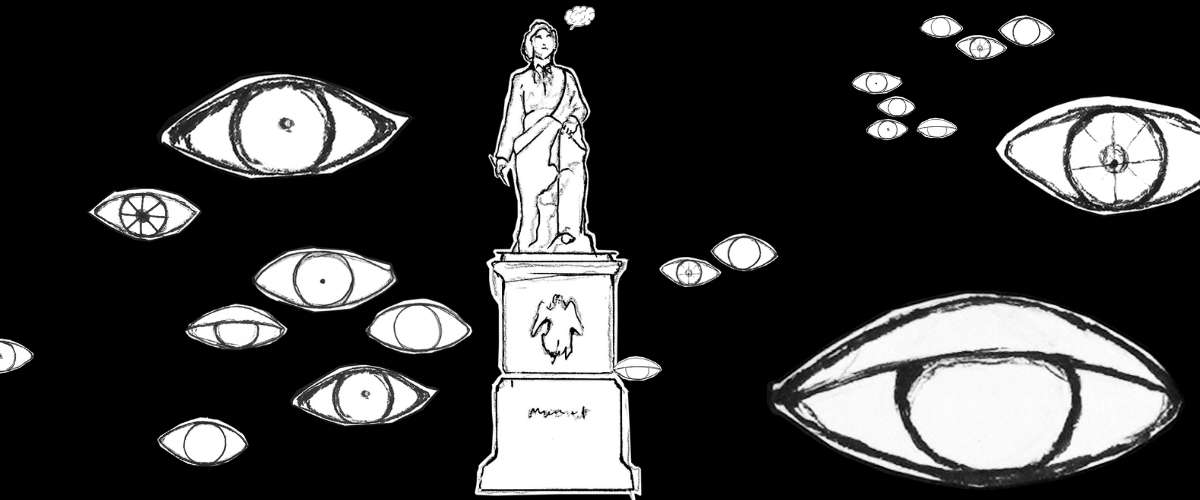
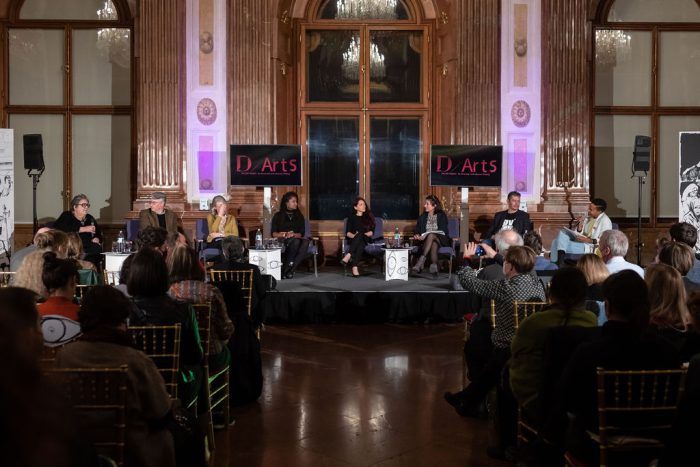
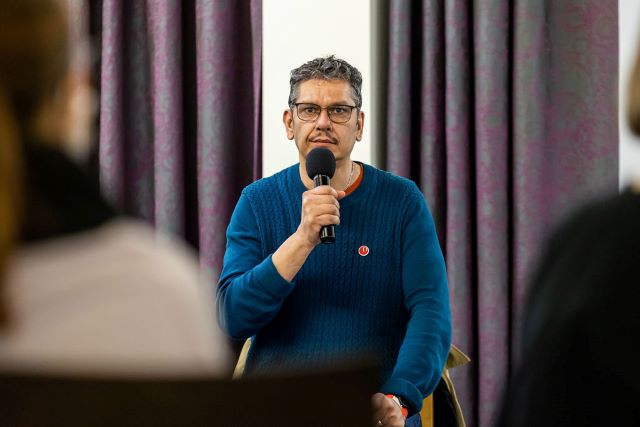
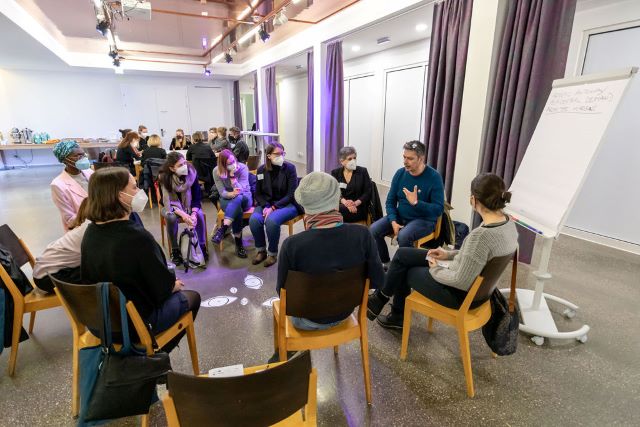
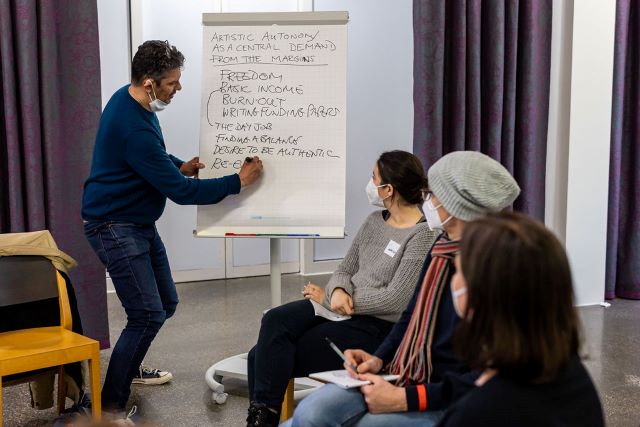
 Artikel drucken
Artikel drucken Literaturverzeichnis
Literaturverzeichnis